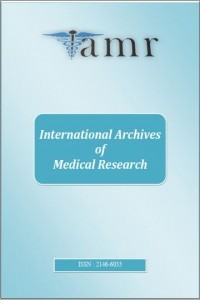Why are the First-Line Therapies Used as Injections Discontinued in the Treatment of Multiple Sclerosis?
Why are the First-Line Therapies Used as Injections Discontinued in the Treatment of Multiple Sclerosis?
Objective: Immunomodulatory therapies (IMTs) are used in the treatment of multiple sclerosis (MS) considering their efficacy and safety. Although other effective treatments have been used in recent years, the use of IMTs still continues. In this study, we aimed to reveal the reasons for the discontinuation of IMTs used as injections. Method: IMTs data of 1464 patients were collected and analysed from the Imed database, where 20-year data of the patients were entered by us. Groups were divided as; Interferon beta-1a subcutaneous (IFN-β1a SC), Interferon beta-1a intramuscular (IFN-β1a IM), glatiramer acetate (GA) and Interferon beta-1b (IFN-β1b). Age, gender, duration of illness, types of disease onset, time to start the injection, duration of injection therapy, and reason for discontinuation of patients were analysed. Results: The most common reason for discontinuation of treatments was found to be disease progression (20.13%, 28.14%, 19.64%, 23.87%). Side effects, increased attack frequency, patient demand, disease activity detection in imaging methods, and pregnancy planning followed the disease progression respectively. Conclusion: IMTs as an injection form are used in the treatment of MS, considering their effectiveness and reliability. The most common reason for discontinuing treatment is disease progression.
___
- 1. Noseworthy JH, Lucchinetti C, Rodriguez M, Weinshenker BG. Multiple sclerosis. N Engl J Med 2000; 343:938-952.
- 2. Wingerchuk DM, Weinshenker BG. Disease modifying therapies for relapsing multiple sclerosis. BMJ 2016; 354:i3518.
- 3. Zhang T, Tremlett H, Leung S, et al. Examining the effects of comorbidities on disease-modifying therapy use in multiple sclerosis. Neurology 2016; 86:1287-95.
- 4. Giovannoni G, Turner B, Gnanapavan S, Offiah C, Schmierer K, Marta M. Is it time to target no evident disease activity (NEDA) in multiple sclerosis? Mult Scler Relat Disord 2015; 4:329-333.
- 5. Kappos L, Wolinsky JS, Giovannoni G, et al. Contribution of Relapse-Independent Progression vs Relapse-Associated Worsening to Overall Confirmed Disability Accumulation in Typical Relapsing Multiple Sclerosis in a Pooled Analysis of 2 Randomized Clinical Trials. JAMA Neurol 2020; 77(9):1132-1140.
- 6. Kalincik T, Horakova D, Spelman T, et al. Switch to natalizumab versus fingolimod in active relapsing-remitting multiple sclerosis. Ann Neurol 2015; 77(3):425-35.
- 7. Tjalf Ziemssen, Tobias Derfuss, Nicola de Stefano, et al. Optimizing treatment success in multiple sclerosis. J Neurol 2016; 263(6):1053-65.
- 8. Hupperts R, Ghazi-Visser L, Martins Silva A, et al. The STAR study: a real-world, international, observational study of the safety and tolerability of, and adherence to, serum-free subcutaneous interferon beta-1a in patients with relapsing multiple sclerosis. Clin Ther 2014; 36:1946-1957.
- 9. Patti F. Optimizing the benefit of multiple sclerosis therapy: the importance of treatment adherence. Patient Prefer Adherence 2010; 4:1-9.
- 10. Filipi M and Jack S. Interferons in the Treatment of Multiple Sclerosis. Int J MS Care 2020; 22(4):165–172.
- 11. C Lebrun, M Bertagna, M Cohen. Cutaneous Side-effects of Immunomodulators in MS. Int MS J. 2011; 17(3):88-94.
- 12. Rıo J, Comabella M, Montalban X. Multiple sclerosis: current treatment algorithms. Curr Opin Neurol 2011; 24:230-237.
- 13. Gabriel Bsteh G, Laura Algrang, Harald Hegen, et al. Pregnancy and multiple sclerosis in the DMT era: A cohort study in Western Austria. Mult Scler 2020; 26(1):69-78.
- ISSN: 2146-6033
- Yayın Aralığı: Yılda 2 Sayı
- Başlangıç: 2011
- Yayıncı: Veysi AKPOLAT
